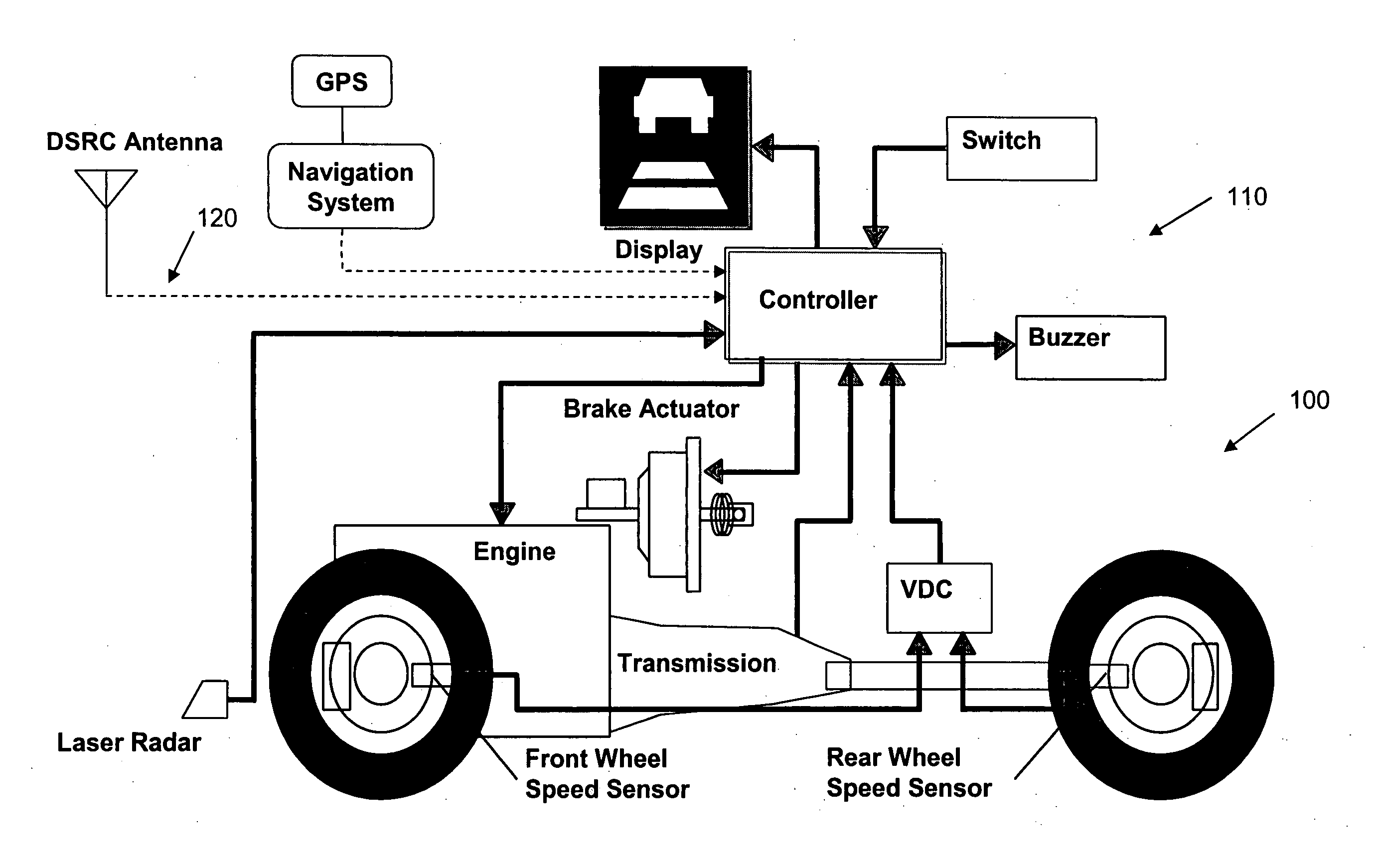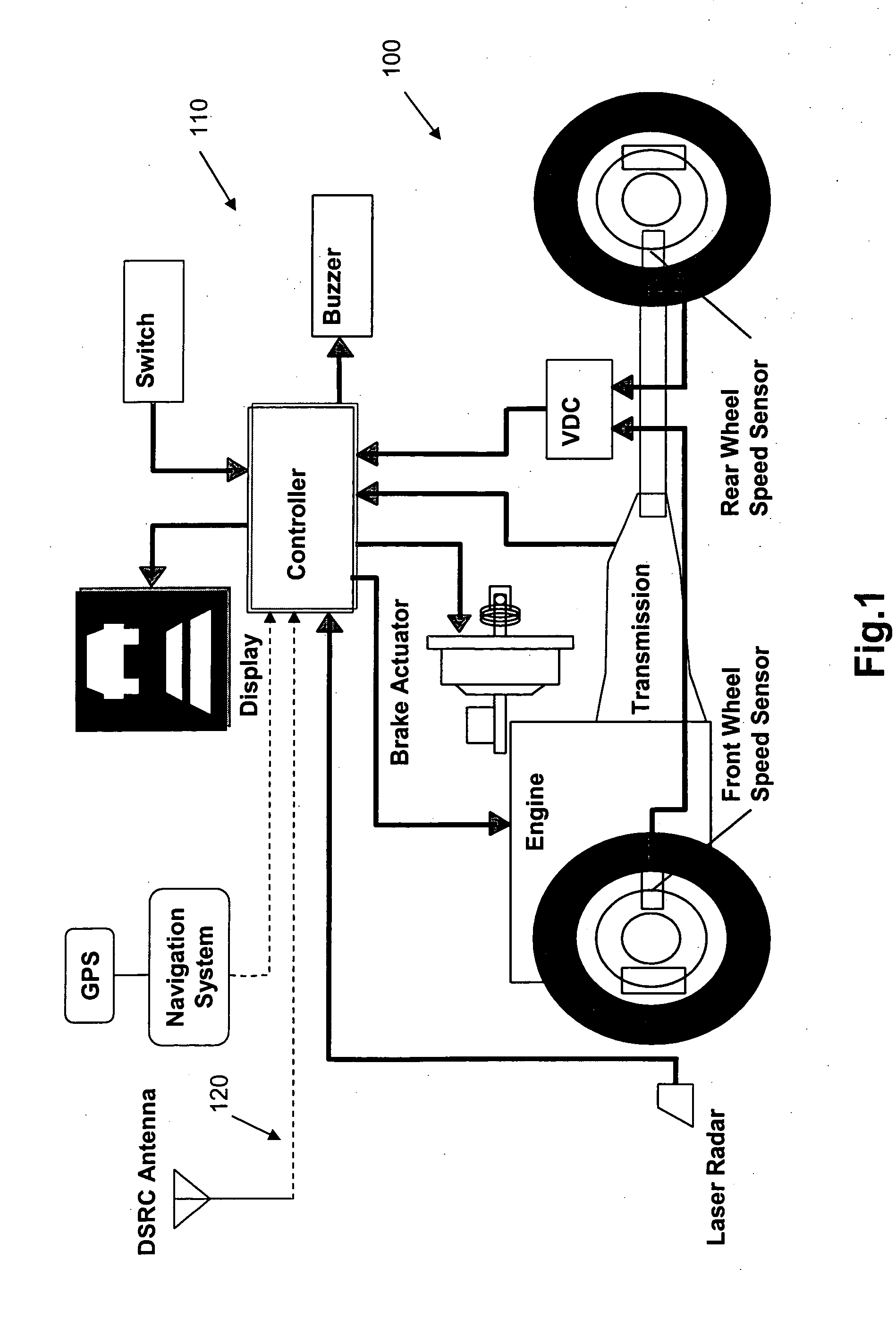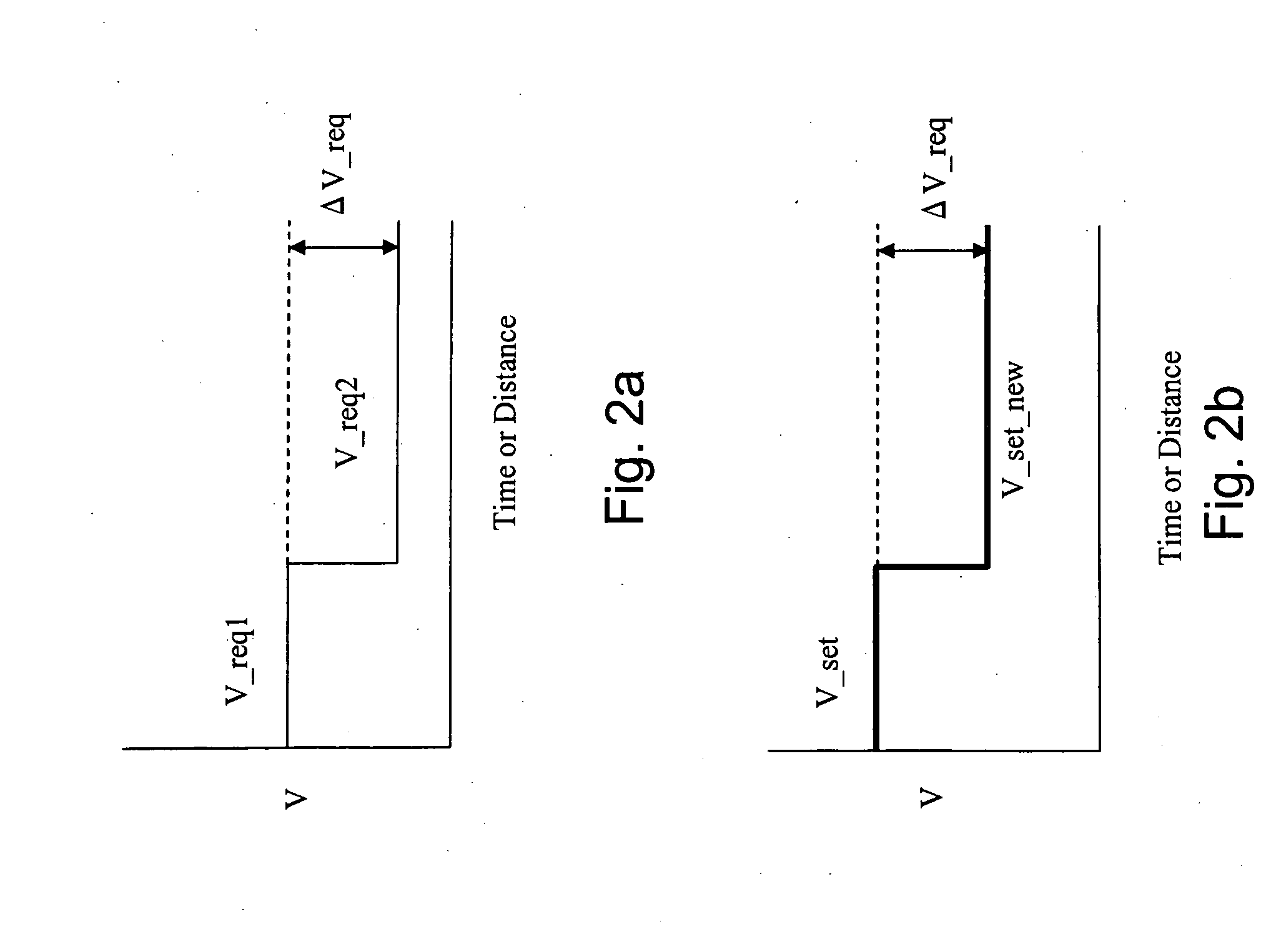System and methods utilizing slope of target speed for cooperative speed for cooperative speed control system
a speed control system and target speed technology, applied in process and machine control, navigation instruments, instruments, etc., can solve the problem that existing speed control systems still require a relatively substantial amount of input from the driver to alter the speed of the vehicl
- Summary
- Abstract
- Description
- Claims
- Application Information
AI Technical Summary
Benefits of technology
Problems solved by technology
Method used
Image
Examples
first embodiment
[0048] a cooperative speed control system according to the present invention relates to a system that automatically changes a set speed (V_set) of a host vehicle, such as that set using the host vehicle's speed control system (e.g., cruise control, adaptive cruise control system (ACC), etc.) to a new set speed (V_set_new) based on a change in environmental conditions of the vehicle, such as by way of example, a change in speed limit. The change in environmental condition may be communicated to the vehicle in a variety of ways, such as, for example, via a wireless radio broadcast from an infrastructure communication device received by a radio onboard the host vehicle.
[0049] An exemplary scenario implementing the first embodiment will now be described, followed by a more detailed description of some other embodiments of the invention.
[0050] In an exemplary scenario, there is a host vehicle 100 that is traveling down a roadway having a cooperative speed control system according to the...
second embodiment
[0056] In a second embodiment according to the present invention, the set speed (V_set) is again changed based on a differentiation in speed between the first required speed (V_req1) and the second required speed of the vehicle (V_req2). However, the differentiation in speed is now in the form of a ratio of the second required speed to the first required speed. That is, the new set speed is determined based on a ratio of the second required speed (V_req2) and the first required speed (V_req1). That is, instead of changing the set speed by the exact difference between V_req1 and V_req2 in a one-to-one relationship, the set speed is changed by adjusting to the set speed based on a ratio of V_req2 and V_req1. Thus, V_set_new may be determined based on the equation
V_set_new=V_set*α—ΔV (3)
where
α—ΔV=V—req2 / V—req1 (4).
In an exemplary scenario according to this second embodiment, if V_req1 is 65 miles per hour, and V_req2 is 50 miles per hour, α_ΔV would be about 0.77 (50 divided by ...
PUM
 Login to View More
Login to View More Abstract
Description
Claims
Application Information
 Login to View More
Login to View More - R&D
- Intellectual Property
- Life Sciences
- Materials
- Tech Scout
- Unparalleled Data Quality
- Higher Quality Content
- 60% Fewer Hallucinations
Browse by: Latest US Patents, China's latest patents, Technical Efficacy Thesaurus, Application Domain, Technology Topic, Popular Technical Reports.
© 2025 PatSnap. All rights reserved.Legal|Privacy policy|Modern Slavery Act Transparency Statement|Sitemap|About US| Contact US: help@patsnap.com



